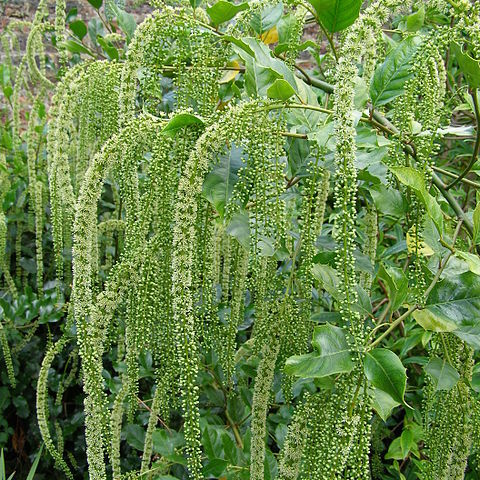Hypanthium small, broadly cupulate; sep 5, small, erect; pet 5, narrowly oblong; stamens 5; filaments pubescent; ovary superior, bilocular, longitudinally 2-grooved, hairy; style grooved; stigma capitate; fr an indurate capsule, at first 2-grooved, tipped with the persistent style, eventually septicidal to the summit of the style; shrubs with chambered pith, superposed axillary buds, pinnately veined, serrulate lvs and slender, terminal racemes of small white fls. 20, e. U.S., e. Asia, w. Malaysia.
Shrubs without bristles and spines. Leaves: stipules minute, subulate; blade elliptic or obovate, surfaces glabrous or glabrate abaxially, glabrous adaxially, pinnately veined. Inflorescences: bracts subtending pedicels caducous. Flowers: hypanthium cup-shaped; sepals green; petals white; styles connate and grooved at anthesis, distinct in fruit. Capsules 2-locular, longitudinally 2-grooved. x = 11.

